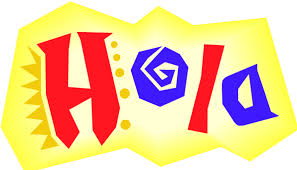Category:Spanish language--1970s
|
|
Spanish language : 2020s -- 2010s -- 2000s -- 1990s -- 1980s -- 1970s -- 1960s -- 1950s -- 1940s -- 1930s -- 1920s -- 1910s -- 1900s -- 1850s -- 1800s -- 1700s -- 1600s -- 1500s -- 1450s -- Home Timeline : 2020s -- 2010s -- 2000s -- 1990s -- 1980s -- 1970s -- 1960s -- 1950s -- 1940s -- 1930s -- 1920s -- 1910s -- 1900s -- 1850s -- 1800s -- 1700s -- 1600s -- 1500s -- 1450s -- Medieval -- Home
1970s : English (1970s) -- French (1970s) -- German (1970s) -- Italian (1970s) -//- Other
|
History of Research (1970s) -- Notes
In addition to the subjects prevalent in the 1960s, i.e., Qumran (on which Antonio González Lamadrid, José O'Callaghan Martínez and Manuel Jiménez F. Bonhomme wrote in 1971, 1974 and 1976, respectively) and the Targum (Alejandro Díez Macho continued publishing his edition of Targum Neophyti 1 between 1970 and 1979 and wrote an introduction to Targumic literature in 1972, whereas Domingo Muñoz León wrote in 1974 and 1977 two complementary studies on the Targumim to the Pentateuch), two new topics diversely related to the history of the Second Temple period attracted the attention of Spanish scholarship and editorship in the 1970s, namely the Greek Bible (to which Natalio Fernández Marcos devoted two important studies in 1972, with Ángel Sáenz-Badillos Pérez, and 1979) and apocalyptic literature (on which a collection of essays by Mathias Delcor was published in 1977). These two subjects were to grow in importance over the next decades with new studies by Fernández Marcos and María Victoria Spottorno Díaz-Caro amidst other scholars in the 1980s and the 2000s, and the publication of an extensive collection of Old Testament Pseudepigrapha in Spanish version edited by Alejandro Díez Macho and Antonio Piñero Sáenz between 1984 and 2009, respectively.
A separate comment must be made regarding O'Callaghan's 1974 essay on the Greek papyri from Qumran Cave 7, where he tentatively identified several extant fragments with various verses of the Gospels (especially 7Q5 with Mark 6:52-53). O'Callaghan had advanced this groundbreaking hypothesis in an article published in 1972 ("¿Papiros neotestamentarios en la cueva 7 de Qumrán",Biblica 53 [1972] 91-100; translated by L. W. Holladay as "New Testament Papyri in Qumran Cave 7?," Journal of Biblical Literature 91/2 [1972] 1-14), yet his insights on this subject have been widely disputed by most scholars on both philological and statistic grounds (see, e.g., Die älteste Evangelien-handschrift?: Der Fund des Markus- Fragments von Qumran un die Anfange der schriftlichen Uberlieferung des Neuen Testaments (1986 Thiede), book; Christen und Christliches in Qumran? (1992 Mayer), edited volume). Nonetheless, O'Callaghan largely contributed with his insights to the comparative study of the literature from Qumran and the New Testament both in the Spanish-speaking world and beyond.
To end with mention must be made of Enric Cortès’ 1976 study on the "departing discourses" in the Hebrew Bible and the New Testament and their narrative framework, Xabier Pikaza's 1976 essay on the historical Jesus, Santos Sabugal's 1976 studies on Paul's conversion in Galatians, and Marcelino Legido López's 1978 volume on Pauline ecclesiology.
As for the Spanish edition of foreign works, most of the volumes translated into Spanish in the 1970s dealt with the historical Jesus, the New Testament (especially Paul and the Fourth Gospel) and the rise of Christianity, although some, albeit scarcely, attention was also payed by Spanish editors to Biblical archaeology and the history and literature of the Second Temple period. Thus George Ernest Wright’s Biblical Archaeology was translated in 1975, André Paul's Intertestament in 1978, and Frederick Fyvie Bruce's Israel and the Nations: From the Exodus to the Fall of the Second Temple in 1979, whereas several works by Josef Blank, Günter Bornkamm, Raymond E. Brown, Rudolf Karl Bultmann, Oscar Cullmann, Charles Harol Dodd, Xavier Léon-Dufour, Georg Eichholz, Joseph A. Fitzmyer, David Flusser, Martin Hengel, Joachim Jeremias, Ernst Käsemann, Sigmund Mowinckel, Heinrich Schlier, Gerd Theissen, Étienne Trocmé, and Geza Vermes were also published within this period. The political situation in Spain (1975 marked the end of General Franco's dictatorial regime) may perhaps explain the wide success of such books as Oscar Cullmann's Jesus und die Revolutionären seiner Zeit and Martin Hengel's Gewalt und Gewaltlosigkeit.
Pages in category "Spanish language--1970s"
The following 62 pages are in this category, out of 62 total.
1
- La inmortalidad del alma o la resurrección de los cuerpos (1970 Cullman / Requenan), book (Spanish ed.)
- Las parábolas de Jesús (1970 Jeremias / Calvo), book (Spanish ed.)
- Tito y Berenice (1970 Marqués), play
- Judith, Spanish ed. (1970 Páramo / @1840 Hebbel), TV production (play)
- Del Cristo de la historia al Jesus de los evangelios (1971 Bouttier / Ros), book (Spanish ed.)
- De los Evangelios al Jesús histórico (From the Gospels to the Historical Jesus / 1971 Caba), book
- Jesús y los revolucionarios de su tiempo (1971 @1970 Cullmann / Requena), book (Spanish ed.)
- Los descubrimientos del mar Muerto (1971 González Lamadrid), book
- Matías, el apóstol suplente (1971 Vega), novel
- Jesús, el niño Dios (Jesus, the Child of God / 1971 Zacarías), feature film
- El Targum (1972 Díez Macho), book
- Notas críticas al texto griego del Génesis (1972 Fernández Marcos/Sáenz-Badillos), book
- Juan = The Gospel of John (1973-74 @1956 Barclay), book (Spanish ed.)
- Jesús de Nazaret: historia y mensaje (1973 Blank / Fierro), book (Spanish ed.)
- Jesús y la violencia revolucionaria (1973 Hengel), book (Spanish ed.)
- El período intertestamentario = Between the Testaments (1973 @1960 Russell / Marín), book (Argentine ed.)
- Historia y escatología (1974 Bultmann), book (Spanish ed.)
- Dai Vangeli al Gesù storico = De los Evangelios al Jesús histórico (From the Gospels to the Historical Jesus / 1974 @1971 Caba), book (Italian ed.)
- El evangelio de Juan (The Gospel of John / 1974 @1916 Erdman), book (Spanish ed.)
- Teología del Nuevo Testamento (1974 Jeremias / Ruiz-Garrido), book (Spanish ed.)
- Dios-Palabra: Memra en los Targumim del Pentateuco (1974 Muñoz León), book
- Los papiros griegos de la cueva 7 de Qumrán (1974 O'Callaghan Martínez), book
- Proceso a Jesús (Trial of Jesus / 1974 Sáenz de Heredia), feature film
- Jesús de Nazaret visto por los testigos de su tiempo (1974 Trocmé / González), book (Spanish ed.)
- Jesucristo Superstar = Jesus Christ Superstar, Spanish ed. (1975 Azpilicueta / @1970 Webber), Spanish production, sound recording (opera)
- Jesús de Nazaret = Jesus von Nazareth (Jesus of Nazareth / 1975 @1968 @1956 Bornkamm / Pablos), book (Spanish ed.)
- Teología de San Pablo: síntesis y perspectivas (Pauline Theology: A Brief Sketch / 1975 Fitzmyer / Valiente Malla), book (Spanish ed.)
- Jesús en sus palabras y en su tiempo (1975 Flusser / Corell), book (Spanish ed.)
- Jesucristo Superestrella = Jesus Christ Superstar, Spanish ed. (1975 Gray / @1970 Webber), Mexican production, sound recording (opera)
- El que ha de venir (1975 Mowinckel), book (Spanish ed.)
- La Carta a los Gálatas = Der Brief and die Galater (The Letter to the Galatians / 1975 @1971 @1949 Schlier / Talavero Tovar), book (Spanish ed.)
- Judas (1975 Tosi), novel
- Filón de Alejandría: Obras completas (Philo of Alexandria: Complete Works / 1975-76 Triviño), book
- Arqueología bíblica (1975 Wright / Valiente), book (Spanish ed.)
- Los discursos de adiós de Gn 49 a Jn 13-17: Pistas para la historia de un género literario en la antigua literatura judía (1976 Cortès), book
- Jesús vivió y murió en Cachemira (Jesus Died in Kashmir / 1976 Faber-Kaiser), arch-fi book
- Palabras desconocidas de Jesús = Unbekannte Jesusworte, 3rd ed. (Unknown Sayings of Jesus / 1976 @1963 @1948 Jeremias / Vevia Romero), book (Spanish ed.)
- Los documentos de Qumrán (1976 Jiménez F. Bonhomme), book
- Los orígenes de Jesús (1976 Pikaza), book
- Análisis exegético sobre la conversión de san Pablo: el problema teológico e histórico (1976 Sabugal), book
- La conversión de san Pablo: Damasco ¿ciudad de Siria o región de Qumrán? (1976 Sabugal), book
- Mito y tradición en la literatura apocalíptica (Myth and Tradition in Apocalyptic Literature / 1977 Delcor), book
- El evangelio de Pablo: Esbozo de teología paulina (1977 Eichholz), book (Spanish ed.)
- Jerusalén en tiempos de Jesús (1977 Jeremias / Ballines), book (Spanish ed.)
- Gloria de la Shekiná en los targumín del Pentateuco (1977 Muñoz León), book
- Jesús, el judío (1977 Vermes / Álvarez, Pérez), book (Spanish ed.)
- Salomé (Salome / 1978 Almodóvar), short film
- Pablo de Tarso = Paulus (Paul / 1978 @1969 Bornkamm / Sala, Vigil), book (Spanish ed.)
- Indisolubilidad del matrimonio y divorcio en la Biblia (1978 Díez Macho), book
- Interpretación del cuarto evangelio (1978 Dodd / Alonso, Herranz), book (Spanish ed.)
- Evangelio apócrifo según San Simón el Zelota (1978 González Ruiz), book
- Tarde te amé (1978 Heatherley / Sipowicz), novel (Spanish ed.)
- La Iglesia del Señor: Un estudio de eclesiología paulina (1978 Legido López), book
- Intertestamento (1978 Paul), book (Spanish ed.)
- Israel y las naciones: La historia de Israel desde el Éxodo hasta la destrucción del Segundo Templo (1979 Bruce), book (Spanish ed.)
- Judith, Spanish ed. (1979 Castellón / @1931 Giraudoux), TV production (play)
- El Corán (The Qur’an / 1979 Cortés), book
- Introducción a las versiones griegas de la Biblia (1979 Fernández Marcos), book
- El evangelio de Juan (The Gospel of John / 1979 Mateos, Barreto), book
- El quinto evangelio = Il quinto evangelio (The Fifth Gospel / 1979 @1975 Pomilio / Pentimalli), novel (Spanish ed.)
Media in category "Spanish language--1970s"
The following 2 files are in this category, out of 2 total.
- 1972 Zacarias (film).jpg 214 × 317; 24 KB
- 1976 Ruiz (film).jpg 214 × 317; 23 KB




